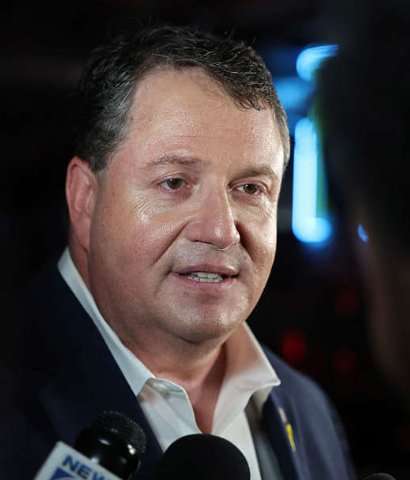 It’s no secret that Republican congresspeople are running up against a wall of seething hatred from their constituents in the town hall meetings that they were conducted until ordered to stop.
It’s no secret that Republican congresspeople are running up against a wall of seething hatred from their constituents in the town hall meetings that they were conducted until ordered to stop.
At left, Kamala Harris’ running mate Tim Walz makes an amusing offer.
Former Veep Candidate Tim Walz Makes Offer to Republican Voters
Renewable Energy
Trump’s Third Term
 From MSN:
From MSN:
Representative Randy Fine (R-FL) has sparked controversy by advocating for the repeal of the 22nd Amendment, which limits U.S. presidents to two terms, citing President Donald Trump’s role in brokering a Gaza peace agreement as justification for extending his presidency. A bipartisan coalition of lawmakers introduced a resolution denouncing Fine’s proposal as a danger to democratic norms, escalating the debate. Amending the Constitution would require a two-thirds vote in Congress and ratification by three-quarters of state legislatures, a formidable hurdle.
Is this a joke? Congressional Republican Trump sycophant is suggesting that the president’s bid for a third term should be done legally, even though the last few years have brought a nonstop onslaught of grossly illegal acts: the storming of the Capitol, numerous other attempts to overthrow the U.S. federal government by overturning the 2020 election, stealing top-secret government documents, an adjudicated rape, the 34 counts of business fraud on which Trump was convicted, current-day violations of posse comitatus, the execution of unconvicted Venezuelan people on ocean-going ships, and the bulldozing the East Wing of the White House.
The man’s life is one big, ongoing crime; let’s be honest here.
Renewable Energy
How Should the Measles/Mumps/Rubella Vaccine Be Administered? Should You Ask a High School Baseball Coach?
 There are so many things going wrong in this country simultaneously that it’s hard to list them all.
There are so many things going wrong in this country simultaneously that it’s hard to list them all.
Here’s something that no one could have seen coming: (see short video here) crackpot politicians giving parents insane medical advice about how to care for their children.
If I told you that our country’s parents were making decisions on vaccinating their children based on information provided by figure skaters or lawn mower salesmen, you wouldn’t believe me.
But the case is actually worse; it’s coming from the White House.
Renewable Energy
Do Americans Approve of Our Country’s Execution of Innocent People?
 In this short video on the bombing of ships leaving Venezuela, President Trump asserts that drug overdoses took like lives of more than 350,000 people last year, a figure that, according to the CDC, is actually 79,383.
In this short video on the bombing of ships leaving Venezuela, President Trump asserts that drug overdoses took like lives of more than 350,000 people last year, a figure that, according to the CDC, is actually 79,383.
In any case, the video fails to mention that executing people who have not been charged with and convicted of a crime is a violation of both domestic and international law.
Do Americans Approve of Our Country’s Execution of Innocent People?
-
Climate Change2 years ago
Spanish-language misinformation on renewable energy spreads online, report shows
-
Climate Change3 months ago
Guest post: Why China is still building new coal – and when it might stop
-
Climate Change Videos2 years ago
The toxic gas flares fuelling Nigeria’s climate change – BBC News
-

 Greenhouse Gases1 year ago
Greenhouse Gases1 year ago嘉宾来稿:满足中国增长的用电需求 光伏加储能“比新建煤电更实惠”
-
Greenhouse Gases3 months ago
Guest post: Why China is still building new coal – and when it might stop
-

 Climate Change1 year ago
Climate Change1 year ago嘉宾来稿:满足中国增长的用电需求 光伏加储能“比新建煤电更实惠”
-

 Carbon Footprint2 years ago
Carbon Footprint2 years agoUS SEC’s Climate Disclosure Rules Spur Renewed Interest in Carbon Credits
-
Renewable Energy4 months ago
US Grid Strain, Possible Allete Sale











